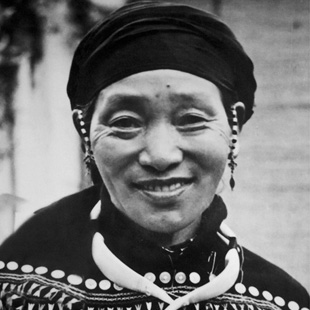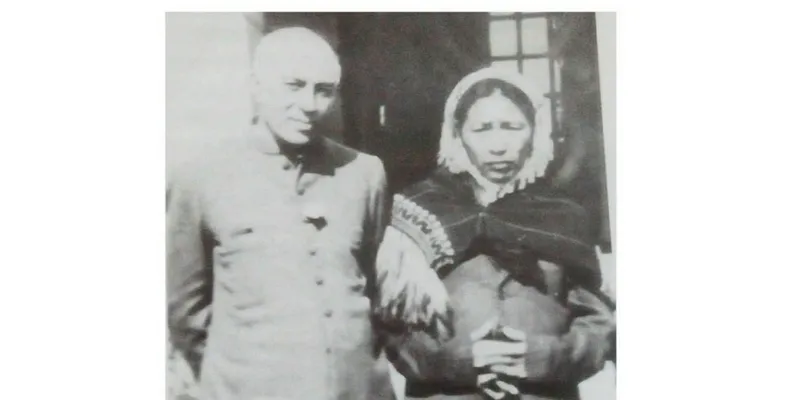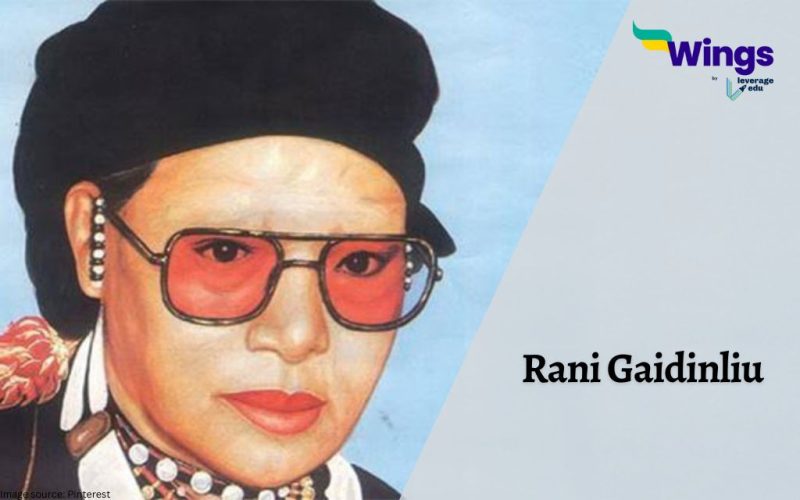Rani Gaidinliu was an Indian freedom fighter who belonged to the Naga Tribe. She was born in the Indian state of Manipur and belonged to the Rongmei Tribe. Rani Gaidinliu was strictly against the Naga Christian nationalists and missionaries, who according to her, posed a great threat to her tribe. Therefore, she, along with other prominent members of the Naga community such as Haipou Jadonang remained committed to the nation’s cause and welfare. Let us learn about her life and her involvement in the uprisings.
Table of Contents [show]
Who was Rani Gaidinliu?
- Rani Gaidinliu was born on 26 January 1915 in the Indian state of Manipur.
- Owing to the scarcity of educational opportunities during that time, she did not receive formal education from any educational institution.
- Her life as a revolutionist began in 1927 when she joined rebel forces with her cousin Haipou Jadonang.
- Her involvement in the minor rebellions ultimately led to the beginning of the Heraka Movement.
- Through this movement, Rani Gaidinliu wanted to restore the glory and prominence of the Naga Tribal religion to its former golden state.
- Soon after her joining, she became the leader of the movement which ultimately led to her imprisonment.

Also Read: APJ Abdul Kalam’s Education
How Did Rani Gaidinliu Rose to Prominence?
- At the age of merely 17 years, Rani Gaidinliu started organizing numerous rebellions against the British government.
- She commanded guerrilla troops due to which she often became the centre of attention for the Britishers.
- Moreover, Rani Gaidinliu also urged the people of Zeilangrong to refuse to pay unjust high taxes.
- To combat Rani Gaidinliu’s efforts to ignite the spark of courage and self-governance among the citizens, the government used harsh measures, increased taxes, and levied fines.
- The government also started a hunt for Rani Gaidinliu and promised monetary prizes for anyone who brought any useful information. Additionally, they also promised a 10-year tax exemption. All these and other advances made by the government forced her to hide for several years.
- While hiding from the forces, Rani Gaindinliu travelled across Manipur, Nagaland, and Assam.
- Owing to her increasing popularity and admiration among the masses, the British government organized a special Assam Rifles unit which was led by Captain MacDonald. The primary aim of this unit was to capture Gaidinliu and put her efforts to an end thereby suppressing any revolts against the government.
- The British government eventually managed to discover her hideout which led to her imprisonment on October 17, 1932.
- During this struggle, numerous supporters of Rani Gaidinliu were killed while several others were imprisoned.
- She was found guilty of murder and abetting murder.
- In 1937, Jawahar Lal Nehru met her in Shilong Jail and swore to pursue her freedom.

Imprisonment and Later Life of Rani Gaidinliu
- Rani Gaidinliu was arrested in 1932 at the young age of 16 and was imprisoned for 14 years of her life.
- Owing to her involvement in the Heraka Movement and other rebellions against the Britishers, she was sentenced to life imprisonment.
- During her time in prison, she was often transferred to several prisons across the Northeast region between 1932 and 1947.
- After being released from prison in 1947, she continued to work for the overall development and betterment of the Naga community.
- Owing to her inspiring bravery and commitment to the cause, India’s former Prime Minister Jawaharlal Nehru gave her the title of Rani.
- She was also subsequently recognized as the daughter of the hills.
Also Read: The Upanyas Samrat of India: Munshi Premchand
What was the Heraka Movement?
- The Heraka Movement began in Japan somewhere in the 1960s.
- It was a popular anti-British religious movement
- Gaidinliu, along with her cousin Haipou Jadonang, started this rebellious movement at the tender age of only thirteen.
- In simple words, the Heraka Movement was launched to promote the concept of Naga self-governance. Moreover, it also opposed the unwilling conversion of Nagas to Christianity.
- Through this movement, Gaidinliu wanted to take power from the government’s hands and eliminate them completely.
What was the Background of the Uprisings?
- During the time Gaidinliu was born, the British forces were continuously making political, military, and economic advances in the northeastern region.
- They wanted to tame the tribal people much like they did in other countries by first introducing advancements and then later taking what belonged to these tribes.
- The British forces also invited the Americal Baptists Foreign Mission Society to civilize the local community.
- Soon after their arrival, they managed to convert a major part of the population and established infrastructure.
- However, not every Naga joined the force. Some people like Gaidinliu and Jadonang made major contributions to the Indian independence movement.
Also Read: The First President of India, Dr Rajendra Prasad Education & Biography
What was the Legacy of Rani Gaidinliu?
- Owing to her commitment to uplifting the suppressed sections and the overall betterment of the nation, Rani Gaidinliu is remembered for her courage and resilience.
- In recognition of her brave soul, the N. Biren Singh government named a park after her Rani Gaidinliu Park at Mantripukhri in Imphal. Moreover, the park also contains a statue of the freedom fighter.
- Additionally, in the year 1996, the government of India issued a postal stamp in her honour followed by a commemorative coin in 2015.
Related Blogs
FAQs
The correct answer to this question is Jawaharlal Nehru. He met Gaidinlu in 1937 at the Shillong Jail, promised to seek her release, and gave her the title Rani. In this way, she started gaining popularity as Rani Gaidinliu.
Rani Gaidinliu passed away on 17th February 1993. She was awarded numerous prestigious awards such as the Padma Bhushan (1982), Vivekananda Sewa Summan (1983), Stree Shakti Purashkar (1991), and Bhagwan Birsa Munda Puraskar (1996).
India’s freedom fighter Rani Gaidinliu is widely recognized as the Daughter of the Hills. She was born in the Tamenglong District of Manipur. Moreover, Rani Gaidinliu spent over 14 years in jail for fighting against the unjust and oppressive British forces.
For more such interesting and informative topics on Famous Personalities and more, stay tuned to our General Knowledge section. If you want to know more about studying abroad, reach out to our experts on Leverage Edu!
 One app for all your study abroad needs
One app for all your study abroad needs















 45,000+ students trusted us with their dreams. Take the first step today!
45,000+ students trusted us with their dreams. Take the first step today!
